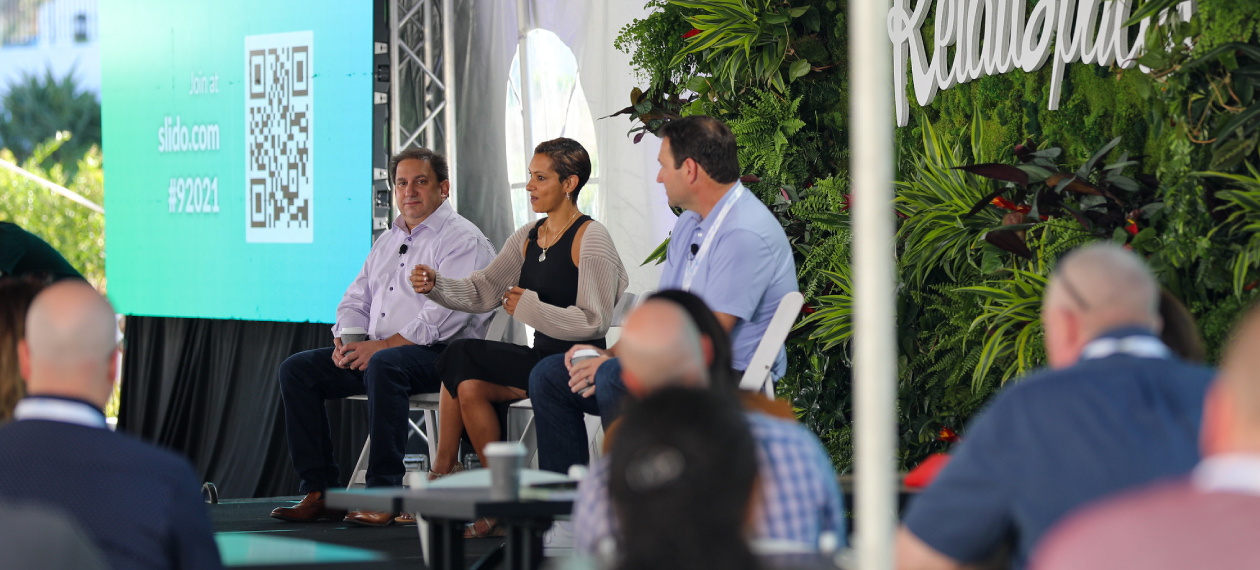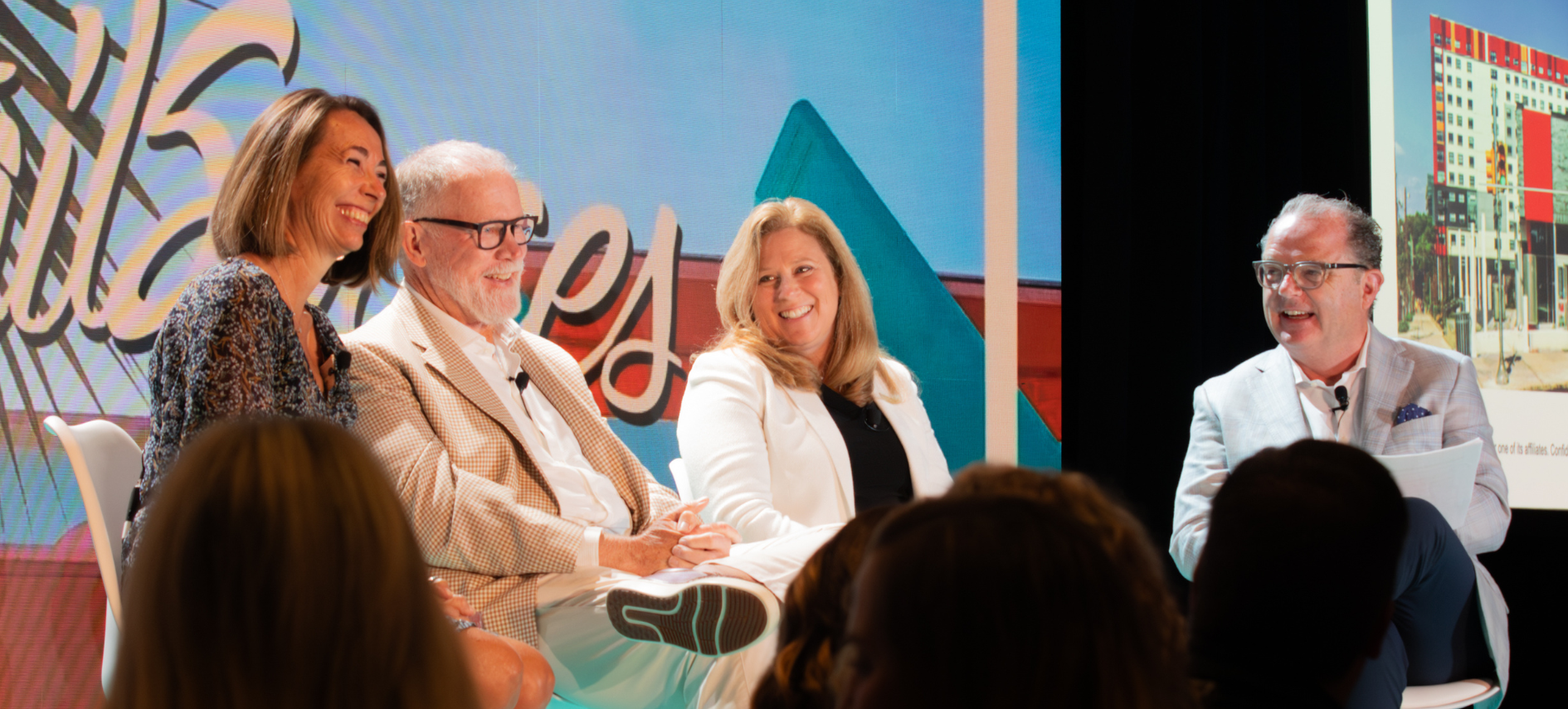While it’s undeniable the pandemic accelerated the shift to e-commerce — one that will likely sustain — physical retail isn’t going away just yet.
Instead, retailers must pivot their strategies, examine their footprint and decide what aspects of physical shopping continue to resonate with changing consumer preferences.
This need for the industry to transform in the wake of COVID was up for discussion recently at RetailSpaces, in a town hall featuring Steve Lamontagne, Global Vice President of Design and Formats for Walgreens, Kim Ellis, Senior Vice President of Store Development for Black Rifle Coffee Company, and Ryan Haskell, Vice President of Store Development for T-Mobile.
“I’ve been in physical retail my whole career,” Lamontagne said. “It’s about listening to customers, using data, and taking leaps of faith. Relevancy will be the key for the future.”
Lessons Learned
As discussed many times over the course of the last year-and-a-half, the COVID-19 pandemic left a real mark on the retail industry, spurring changes to the way customers shop and companies provide their services. These changes won’t be fleeting, and instead, will provide a marker for the future of retail, both physically and online.
“It’s two-fold,” Lamontagne said. “For a company like Walgreens, we’re an essential business, people need prescriptions and products. It was back to basics for us, but with a spin. People had to pull up from the bootstraps and get it done.”
While Walgreens made some immediate changes, Lamontagne said the company was forced to think further into the future.
“How do we anticipate and hypothesize how customers want front-of-store products,” he said, alluding to in-store pickup and delivery.
Just a few weeks after the pandemic began, T-Mobile acquired Sprint, ushering in major changes for the telecom company. The following months saw the company work to finesse its new identity while dealing with the challenges of COVID and a bustling e-commerce industry.
“Our e-commercee business was in the single digits,” Haskell said. “Our platform was having retail stores. We still have 14,000 stores in the U.S. It’s a monster platform that we have to figure out how to optimize in a new environment.”
Top of mind for T-Mobile, Haskell said, is figuring out how to provide convenience for customers while also providing vital information about the new 5G experience.
“How do we increase and accelerate our e-commerce platform to support customers that don’t have a great need,” he said. “We have to graduate to that.”
Evolving Forward
For Black Rifle Coffee the future of retail means combining its online subscription service with a new physical retail presence.
“It’s a marriage,” Ellis said. “Companies that started online are now going to brick and mortar. It can be a nice marriage, you have to have a presence in both. I don’t think brick and mortar is going away.”
Lamontagne said that the future of physical retail needs to focus on customer experience and leveraging existing portfolios. Using those two elements, retailers will remain relevant in the future.
“When you take leaps of faith it’s a big step,” he said. “I believe the physical brick and mortar that’s going to win will be the folks that have the push, the drive, the creativity, and innovation all the way to the C-suite.”
While Haskell said T-Mobile has been closing physical stores as part of its merger with Sprint, the company is actually growing in more rural areas of the country where it didn’t have a presence previously. Additionally, he said that the stores will transition from a transaction setting, where customers buy phones and pay bills, to an experience center where they can get their first taste of 5G.
Tackling Supply Chain Issues
Material shortages, permitting delays, and other supply chain issues have marred the physical retail world since the pandemic started.
Lamontagne said that Walgreens decided to create an in-house permitting position rather than subcontract that work.
“What we found was that this relationship, having someone walking into a facility or on the phone, saying I’m from Walgreens, not I’m here on behalf of them, helped,” he said. “We were clear when we went in what we needed to have in hand, they appreciated that. That was a win-win.”
This new position also assisted in landlord relationships and in allowing the organization to understand local municipal deadlines and scheduling.
Haskell said that one of the main issues T-Mobile has run into is on the human resources side of supply.
“We’re always welcoming new relationships, especially with vendors and landlords that want to communicate.”
“One challenge we are having is vendors saying we can’t do it for that price or we don’t have the human resources to go that speed,” he said. “If that's the case, I encourage vendors to make sure they are having conversations with retailers in advance.”
Open communication was a topic of consideration from several vendors in attendance during the town hall at RetailSpaces, who chimed in from the audience in a health back-and-forth. A few mentioned that sharing scheduling information allows them to work easier with retail partners.
“Communication, communication, communication,” Ellis emphasized. “We’re always welcoming new relationships, especially with vendors and landlords that want to communicate.”
A New Generation of Employees
Ellis said that retailers will need to lean into technology when they look to future store development, not to mention the employees tasked with those efforts. Though she warned a new generation of store development leaders could get lost in tech and lose sight of their customers, as they increasingly rely on digital maps and cameras to view prospective sites.
Haskell concurred, to an extent, noting that over the years some intuition has been lost due to the development of new technology. However, he also noted that the importance of leaning into future advancements far outweighs the negatives, especially as 5G impacts the industry.
“Prior to 4G, 97% of Facebook was done on a laptop or home computer. Today that number is completely reversed,” Haskell said. “From a store development perspective, these kids coming in need to lean into the technology that either exists or is going to exist in the future. This 5G thing is going to have the same impact on society that 4G did, which is, it will completely change the way our society interacts with one another.”
Lamontagne said that when he meets potential new hires he tests their comfort with ambiguity.
"That is a core skill set that the store development workforce will need to bring to the table,” he said. “At some point look at the resume and ask hard questions about how they deal with ambiguity because the customer is changing.”
Subscribe to our blog to keep up-to-date on all of the insights out of RetailSpaces.

Posted by
Physical Retail Reimagined.
RetailSpaces is a community for store development and design innovators.
March 29-31, 2026 | San Antonio, TX
Learn More!








Comments